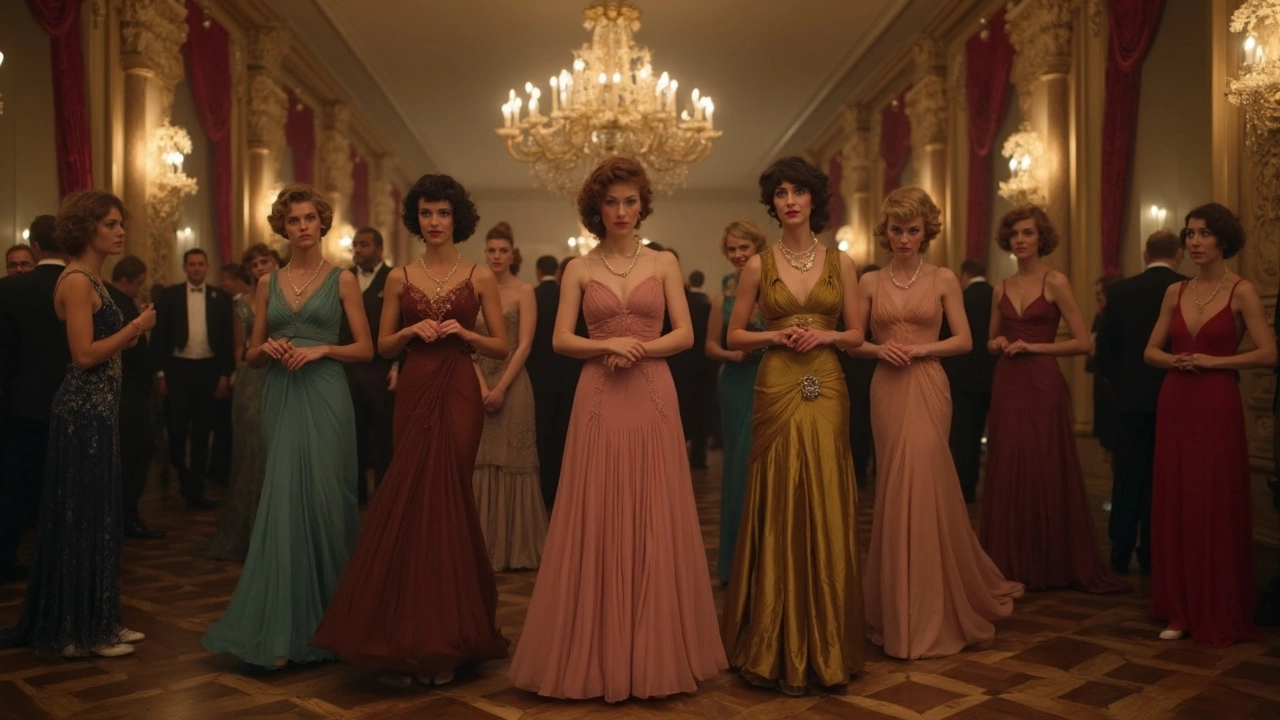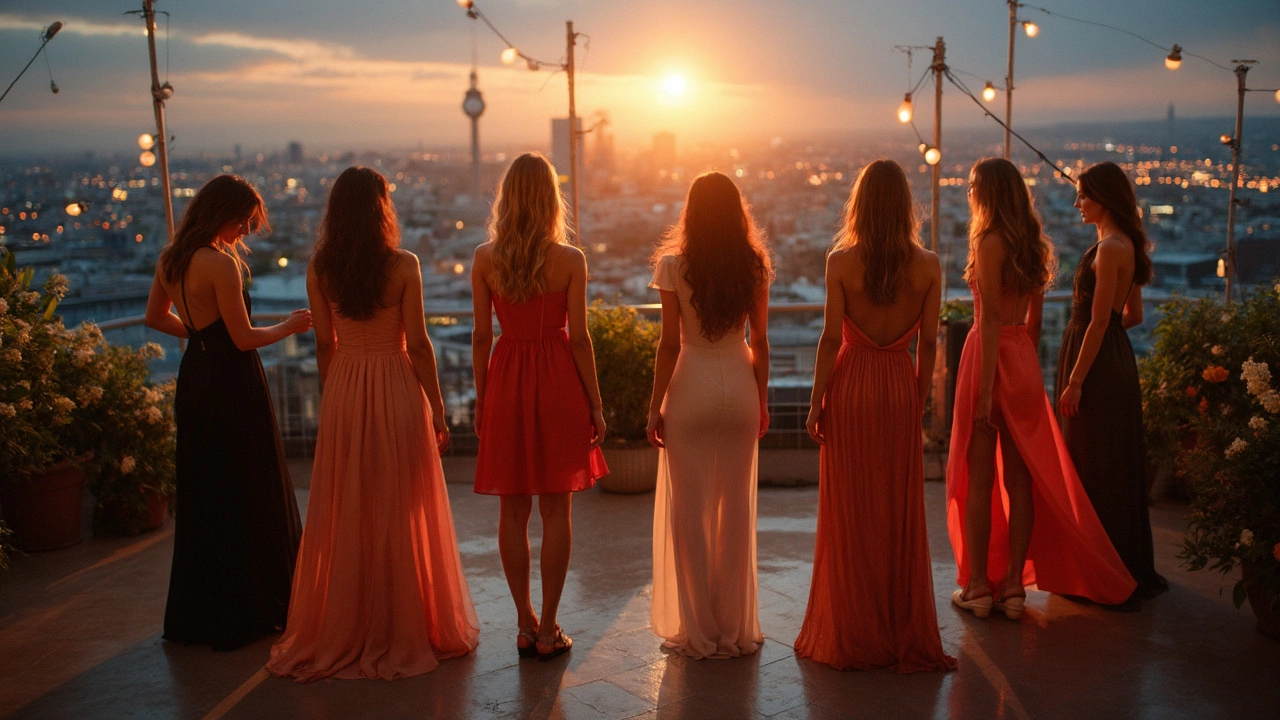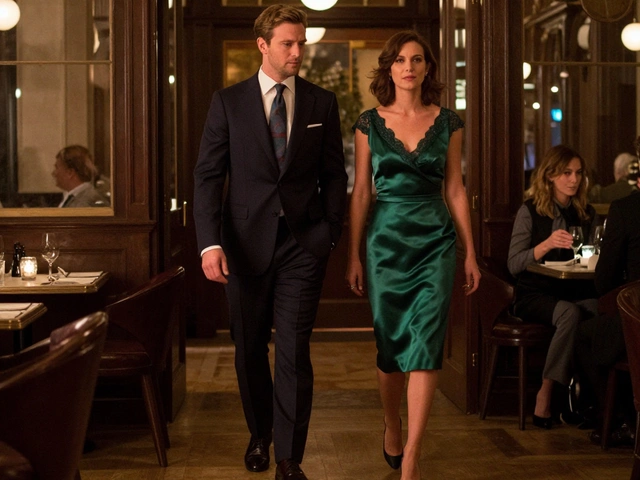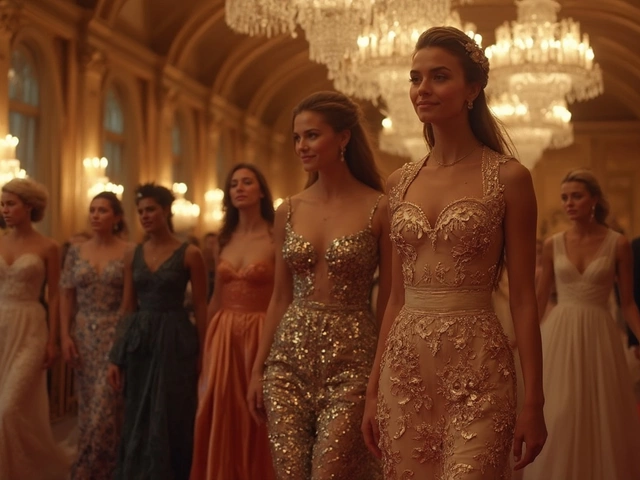What Length is an Evening Dress? Get the Look Just Right

- Cleo Fairchild
- 16 June 2025
- 0 Comments
Evening dresses have a reputation for glamour, but when it comes to length, there’s a lot of confusion. Wondering if your dress should sweep the floor or show off your shoes? You’re not alone. Traditionally, an evening dress means anything from ankle-grazing to full-on floor length. The classic look runs long—think red carpet style—because people associate the most formal nights with extra drama and elegance. But there’s plenty of wiggle room, depending on the event and your own taste.
Let’s get real: nobody wants to trip up the stairs or spend the night worrying about stepping on their own hem. Length does matter, but it’s less about strict rules and more about fitting the mood, space, and how you want to feel. A formal gala might be the time for a sweeping train, while a cocktail night calls for something a bit shorter and easier to move in. Don’t stress, though—we’ll break down what works (and what totally doesn’t) so you can walk in feeling confident and comfortable.
- What defines evening dress length?
- Classic versus modern styles
- Choosing the right length for your body and the occasion
- Smart tips to avoid wardrobe mishaps
What defines evening dress length?
Evening dresses come in a bunch of lengths, but there's a solid range that counts as “evening” in the fashion world. Most people picture full-length dresses, but there are three main cuts you’ll see at real events:
- Floor-length: Hits the ground or just above, sometimes coming with a train. The classic pick for galas and black-tie weddings.
- Ankle-length: This style stops right at or just above your ankle bone. It’s formal, but you won’t have to worry about your shoes getting tangled.
- Tea-length: This one lands mid-calf, somewhere between your knee and ankle. Not technically ‘cocktail’ but perfect for more laid-back evening affairs or when you want to show off cool shoes.
The most important evening dress length is determined by two things: what the event calls for and what feels right on you. Black-tie events almost always mean floor-length or ankle-length. Semi-formal or creative dress codes give you more options, including tea-length or those high-low hem designs you see at trendy weddings.
Here’s a quick cheat sheet for types of evening dress lengths and typical occasions:
| Dress Length | Approximate Measurement (inches) | When to Wear |
|---|---|---|
| Floor-length | 55–62 | Galas, black-tie events, formal banquets |
| Ankle-length | 50–54 | Black-tie optional, weddings, formal dinners |
| Tea-length | 42–47 | Semi-formal parties, outdoor receptions, prom |
If you’re shopping online, pay close attention to the listed measurements—the same label can mean different actual lengths. Also, your own height totally changes the way a dress falls. Someone 5’2” can be drowning in a “regular” floor-length gown, while someone taller might have it hit above the ankle. Always check the height reference if it’s listed, or measure from your shoulder to wherever you want the hem to fall.
Classic versus modern styles
Back in the day, evening dresses pretty much meant floor-length gowns. Picture Audrey Hepburn in "Sabrina" or any royal event—ankle-skimming hems, heavy satins, maybe a train brushing behind. This was all about looking formal and making a statement. There was even a dress code: "white tie" meant full-length, while a "black tie" event could sometimes mean you could sneak by in a shorter piece, but even that used to raise eyebrows.
Fast forward to now, and everything’s a bit more relaxed (thank goodness). Modern looks play with hemlines without sacrificing style. You’ll see everything from tea-length (mid-calf) to high-low skirts and even bold, high-slit numbers at upscale parties. The best part? There’s more choice for everyone—petite, tall, or plus-size.
If you’re wondering what’s out there today, check out these popular length options:
- Full-length: Classic drama, usually skims or touches the floor. Still the go-to for big, traditional galas.
- Tea-length: Hits somewhere below the knee but above the ankle. Super trendy for modern weddings or art events.
- Midi: Stops mid-calf. Easier to move in and a little less formal.
- High-low: Shorter in the front, longer in the back—shows off those shoes and adds some flair.
Fashion houses like Dior and Versace have kept the love for the full-length gown alive, but celebs at award shows now mix it up all the time with shorter cuts and unexpected shapes.
Here’s a quick comparison of how classic and modern evening dress lengths stack up at various events:
| Event Type | Classic Length | Modern Options |
|---|---|---|
| Gala (White Tie) | Full-length | Full-length, high-low, tea-length for relaxed crowds |
| Black Tie | Full-length | Midi, high-low, cocktail length |
| Cocktail Parties | Tea-length | Midi, mini, high-low |
| Weddings (as a guest) | Full-length | Tea-length, midi, high-low |
Long story short: the rules are looser now, but knowing about evening dress length helps you pick the right vibe and avoid those awkward "Am I underdressed?" moments. The mix of classic and modern opens the door to make your own statement every time you walk in.

Choosing the right length for your body and the occasion
The length of your evening dress can seriously change how you look and feel—and that’s not just some fashion myth. It’s all about matching your dress to your body shape and the event itself. If you’re not sure where to start, focus on comfort, dress code, and how the dress moves on you.
Here’s what actually matters when picking the right length:
- Event Type: Black tie usually means a full-length gown, while a cocktail invite gives you room to go tea-length or even a chic midi. Check your invite first—nobody wants to look underdressed (or too over-the-top).
- Height & Proportion: If you’re petite, long hems can make you look even shorter unless the fit’s perfect. Heels help, but so do styles that hit just above the ankle. Tall girls can get away with floor-sweepers, but cropped lengths show off those long legs.
- Your Comfort: Are you dancing? Mingling? If you’ll be moving a lot, skip giant trains or dresses that might trip you up. Choose a length that lets you breathe and have fun.
- Weather & Venue: Outdoor events (especially in summer) might call for shorter lengths so you’re not fighting with the grass. Fancy hotels or chilly venues pair well with dramatic long dresses.
Believe it or not, a 2023 survey by a well-known event planning site showed evening dress length was the single detail that guests most stressed about—more than color, even shoes! Here’s a quick look at what lengths work best at certain events:
| Dress Code/Event | Recommended Length | Pro Style Tip |
|---|---|---|
| Black Tie | Full-length (floor or ankle) | Add heels for drama, keep the hem barely brushing the ground. |
| Cocktail | Tea-length or below-the-knee | Go for a fit that moves with you. Midi is super popular right now. |
| Garden Party | Knee or midi | Pick breezy fabrics, skip dragging hems to dodge grass stains. |
| Formal Wedding | Floor or maxi | Stick with classic cuts, but make sure you can sit or dance easily. |
| Red Carpet Gala | Sweeping floor-length, sometimes with a train | If you wear a train, practice walking in it before the event! |
One more tip: Always test the dress at home. Walk around, sit down, and see how it feels. If you’re constantly hitching up the hem or stepping on the fabric, that’s your sign to try a different length. When the fit and length line up, you’ll actually enjoy yourself—and look great in every photo.
Smart tips to avoid wardrobe mishaps
Let’s face it, nobody wants to spend their evening tugging at a dress or dodging wardrobe disasters. Getting the length and fit right is about saving yourself the headache as much as it is about looking good. Here are some useful tricks that actually work.
- Evening dress length matters most when you’re going up and down stairs or dancing. Always test your hemline at home in the shoes you plan to wear. If the dress scrapes the floor, it’s too long—your heel might catch and cause a slip.
- Bring double-sided fashion tape. It’s a lifesaver for securing necklines, slits, and hems that shift a bit too much. Small rolls fit right into a clutch.
- Opt for stick-on hem tape over needle and thread if you’re short on time. You can trim a dress (or just a lining) yourself—no sewing skills required.
- Undergarments matter more than you think. Seamless or shapewear styles keep lines smooth, and strapless bras are pretty much a must for most gowns with tricky necklines.
- Always sit down in your dress before the big night. If it hikes up too much, or you can’t move comfortably, try adjusting the fit or adding a tiny slit for flexibility.
Here’s a quick table on the most common evening dress mishaps and easy fixes:
| Problem | Quick Fix |
|---|---|
| Too-long hem | Stick-on hem tape for a temp fix |
| Slipping straps/neckline | Double-sided fashion tape |
| Visible undergarments | Seamless underwear or nude colors |
| Static cling | Rub with a dryer sheet, or a touch of lotion on your legs |
| Wrinkles | Travel steamer, or hang in a steamy bathroom before leaving |
Stacy London, style expert and former host of TLC’s “What Not to Wear,” once gave solid advice that sticks:
“Try everything on beforehand, in the actual shoes and the bra you’ll wear that night. If you can’t sit, walk, and dance in it, it’s not the right dress for you.”
It sounds obvious, but you’d be amazed how many people wait until two hours before an event to see if their dress actually works. Do a little prep, and you’ll be free to enjoy the night—no fussing, no worries.


